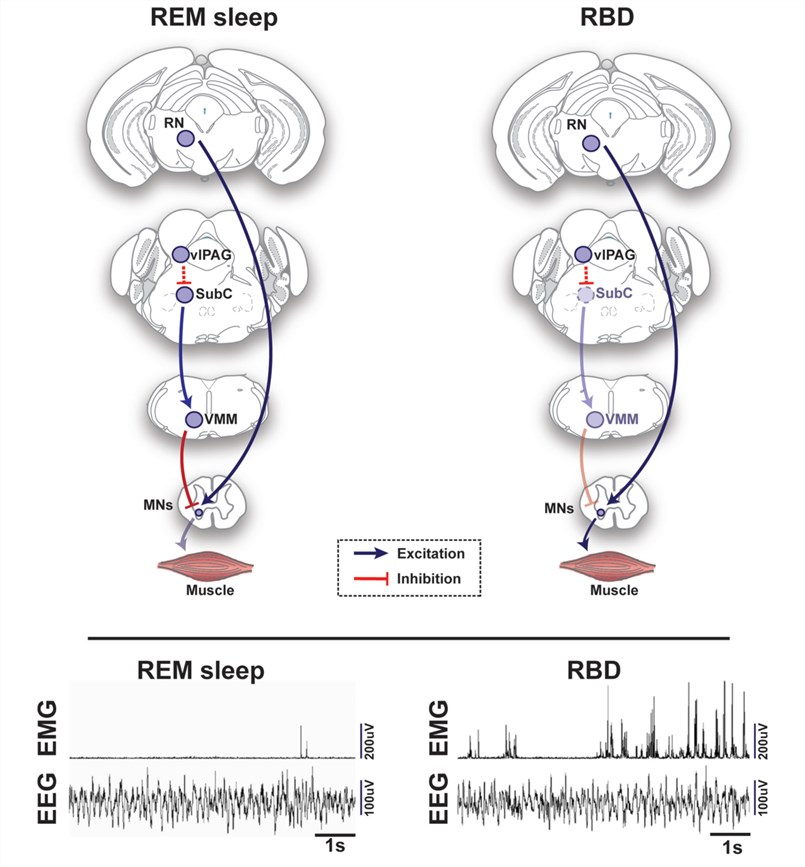Rodent Sleep Disorder Models
Animal-based research has played a critical role in the elucidation of mechanisms that underlie sleep, its regulation, and its disorders and undoubtedly will remain crucial for discovering and validating sleep mechanisms and testing interventions for sleep disorders. As a leading CRO for drug discovery and development, Creative Biolabs offers an array of models for different sleep orders to test the efficacy of potential therapeutics. Moreover, a broad range of analyzing tools has been provided at the same time to satisfy your study requirements.
Introduction of Sleep Disorders
Sleep orders refer to problems with sleep, which can affect the overall health, safety, mood, productivity, and quality of life. Based on the behaviors, problems with natural sleep-wake cycles, breathing problems, difficulty in sleeping, and sleepiness during the day, sleep disorders can be divided into different types: insomnia, sleep apnea, restless legs syndrome (RLS), and narcolepsy. Now, sleep disorders affect a large part of the general population in the world and the awareness of the bad effects of sleep loss and sleepiness is growing. To strengthen our understanding of the underlying physiology of sleep, causes, and mechanisms of sleep disorders, as well as to facilitate the development and preliminary testing of new therapeutic approaches, animal models are absolutely required. Rodents, including mice and rats, are the most commonly used animals preferred in sleep disorder studies.
 Fig.1 Schematic representation of circuits and pathways regulating muscle activity during “normal” rapid eye movement (REM) sleep and REM sleep behavior disorder (RBD) in the rodent brain. (Fraigne et al. 2015)1, 2
Fig.1 Schematic representation of circuits and pathways regulating muscle activity during “normal” rapid eye movement (REM) sleep and REM sleep behavior disorder (RBD) in the rodent brain. (Fraigne et al. 2015)1, 2
Rodent Sleep Apnea Model
Sleep apnea is a sleep disorder that is associated with abnormal breathing patterns. It is divided into two major types: obstructive sleep apnea (OSA) and central sleep apnea (CSA). OSA is more prevalent and is characterized by repetitive occlusions of the upper airway during sleep. Creative Biolabs offers intermittent hypoxia (IH) exposure induced rodent models of OSA to evaluate the effectiveness of therapeutic interventions that improve sleep apnea symptoms. This model is induced by exposing animals to repeated cycles of hypoxia and oxygenation. Various measurements can be conducted to test drug efficacy.
Rodent Sleep Deprivation Models
Sleep is critical for brain functions. Lack of sleep or abnormal sleep patterns negatively affects brain function and normal behavior, leading to different neurodevelopmental disorders. As a result, sleep deprivation models are developed to investigate the relationships between sleep and other neurological diseases, to test interventions with the potential to improve sleep loss-induced brain dysfunctions. We offer both rat and mice models of total and partial sleep deprivation, along with a broad range of assessments.
Rodent Models of Narcolepsy
Narcolepsy is a condition characterized by extreme sleepiness during the day and falling asleep suddenly during the day. This disease has been found to result from alterations in the genes involved in the physiology of the hypocretin ligand or its receptor. As a result, genetically engineered animal models are produced to study this disease and to test novel treatments. Creative Biolabs, equipped with the most advancing genome manipulation techniques, is able to provide the most comprehensive genetically engineering services and animal models for our clients.
Rodent Models of Restless Legs Syndrome (RLS)
RLS is a type of sleep movement disorder. It causes an uncomfortable sensation and an urge to move the legs while asleep. This model can be induced both genetically (D3 receptor-deficient mice, Btbd9-deficient mice) and pharmacologically (neurotoxin 6-hydroxydopamine (6-OHDA) lesioned rat model).
Besides sleep disorders, Creative Biolabs also offers rodent models for other types of neurological diseases, which are categorized into neurology diseases, psychiatry diseases, rare/orphan diseases, and pain models. This comprehensive list is placed below for your review. For a more detailed description of each model, please click the links below.
Creative Biolabs provides the most cost- and time-effective preclinical in vivo pharmacology services, with the highest standards of quality and accuracy. We take a hands-on approach and we collaborate with our clients to learn their specific study requirements. If you are interested in our services, please contact us or send us an inquiry.
References
- Fraigne, J. J.; et al. REM sleep at its core - circuits, neurotransmitters, and pathophysiology. Front Neurol. 2015, 6:123.
- under Open Access license CC BY 4.0, without modification.
For Research Use Only.
